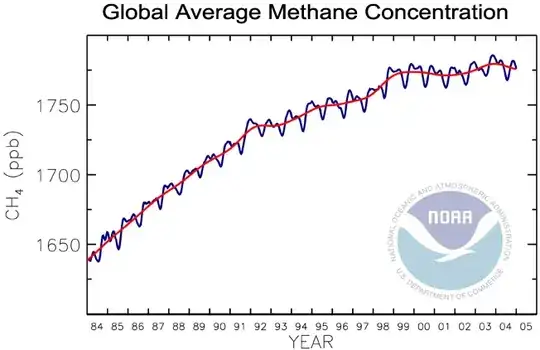Permafrost is, unfortunately, very complicated, even by the standards of climate (which is, itself, an extremely complicated system by the standards of the problems physicists usually deal with, if you want models which make useful predictions), so there are currently no very good predictive models of what happens as far as I know.
First of all, permafrost is different than glaciers or other ice sheets, with which you seem to confuse it. Permafrost is not ice, it is frozen soil (soil which remains frozen for many years in particular): there is some frozen water in it but it's a really tiny amount compared to that in ice sheets, for instance. The problem with permafrost is that it is extremely hard to observe: satellite observations tell you almost nothing useful about it because it is by definition, not visible from satellites. And it is extremely spatially variable, and there is almost no mixing (unlike oceans say, or vegetation). So just knowing how much there is is a serious problem which requires people to actually spend a huge amount of time in remote frozen wastelands with sticks: these are really difficult and slow experiments to do.
That said, we know that something like 9% of the Earth's surface is covered in permafrost, and estimates are that somewhere between 25% and 50% of the carbon in the soil (decayed plant matter) is in permafrost. I have a note from a talk which says about 800Gt of carbon is in permafrost (not sure if this is CO2-equivalent or C). Human CO2 emissions are something like 50Gt / year, so this is a lot of CO2 (but, if it comes out over 100 years, say, it's not that much).
There are two pathways for this stuff to be released: if permafrost melts slowly, then you get aerobic respiration -- it gets warm enough, bacteria get in and digest the plant matter -- and you get CO2 coming out. If it melts quickly, you get anaerobic respiration, and methane comes out.
Both CO2 and methane are not good news, and methane is really quite bad news. CO2 we understand really well, methane I think less well because it is not stable in the atmosphere (I imagine climate models deal with methane however, although I don't know the details).
There are apocalyptic scenarios where you get a lot of CO2 being released, causing permafrost to melt faster and then dump even more CO2 and (worse) methane as the melt rate gets high enough for the transition to anaerobic respiration to occur. As far as I know people think these scenarios are unlikely, but currently the system has too many unknowns to model well.
One important point with any of these things: what we do know is that the system is rather far from equilibrium, and is not linear. It is therefore not safe to make assumptions like 'x hasn't happened so far, therefore x will not happen in the future'.
Disclaimer: I work on climate modelling.
